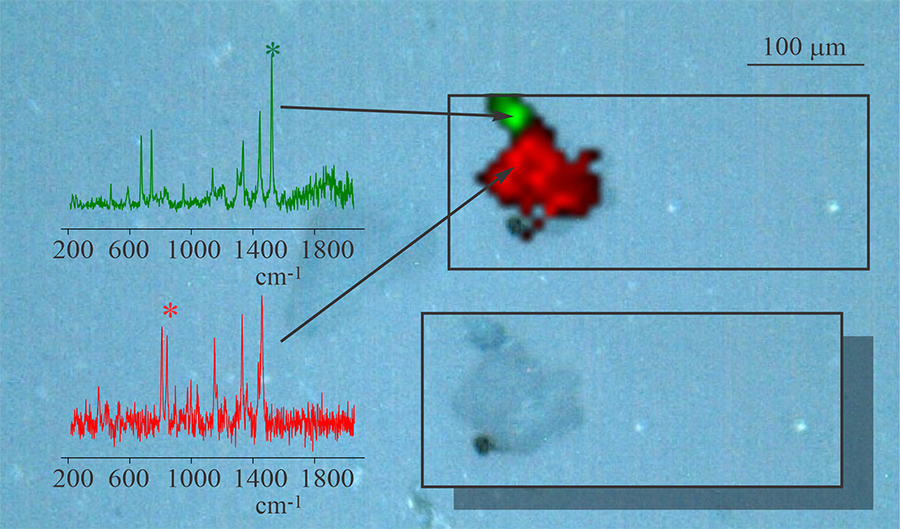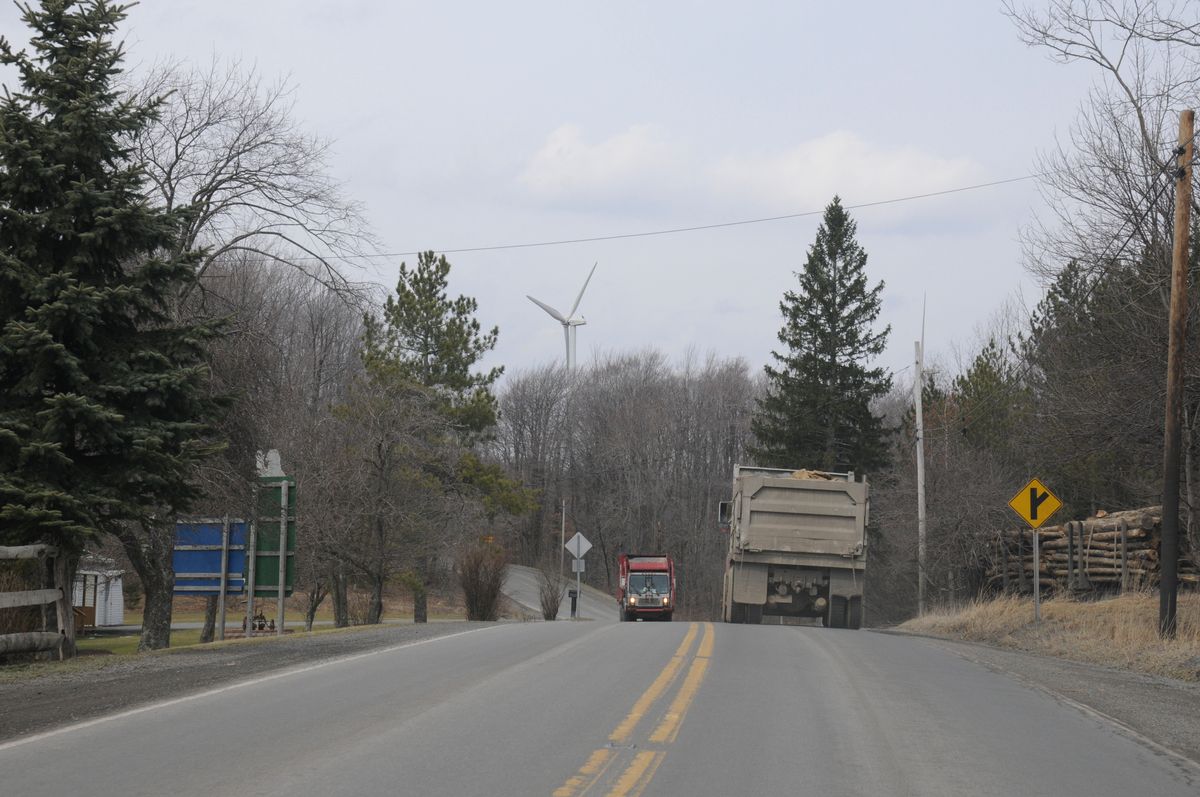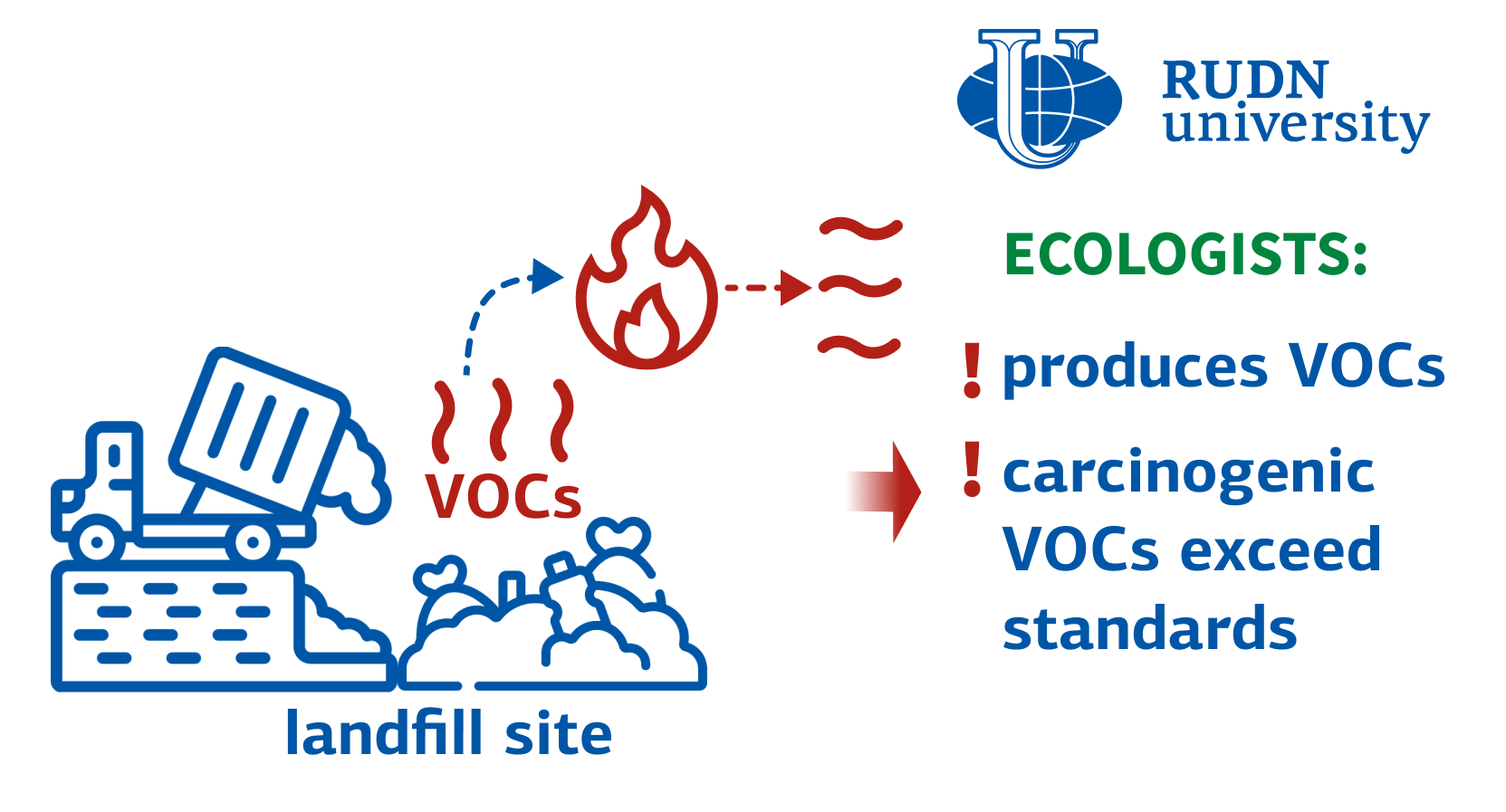A West Virginia University researcher is working to understand and estimate environmental cleanup costs associated with agricultural runoff that causes polluted “dead zones” in downstream coastal systems.
Tag: Pollution
Water industry using deception tactics to deflect blame for sewage pollution in England
A new study published in Nature Water has revealed England’s major water and sewage companies are misleading the public and Government using strategies that mirror those of large polluters, including the tobacco and fossil fuels industries.
FAU Engineering Researchers Develop New Weapon Against Harmful Algal Blooms
Effective management of phosphorus is needed to curb the rise of harmful algal blooms. Few studies have explored how algal biomass, especially blue-green algae, can be used to create materials that remove phosphate from water. Researchers have filled that gap by transforming cyanobacterial biomass into materials that can pull harmful phosphorus out of water.
At the top of the world, lead pollution reaches even pristine glaciers
Human activities have led to the pollution of some of the remotest places in the world, a new study shows.
Some wildfire suppressants contain heavy metals and could contaminate the environment
Researchers reporting in ACS’ Environmental Science & Technology Letters explored whether wildfire suppressants could be a source of elevated metal levels sometimes found in waterways after wildfires are extinguished. Several products they investigated contained high levels of at least one metal.

Quemar incienso puede suponer riesgos para la salud de las personas con alergias y asma
En muchas culturas, es común quemar incienso para prácticas religiosas y culturales, incluidas meditaciones, celebraciones y cultos espirituales y ancestrales.
NIH Study Explores Pollution Exposure and Birth Outcomes in Pregnant Women Living in Historically Redlined Neighborhoods
Residence in redlined census tracts during pregnancy was associated with higher exposure to PM2.5 and lower birth weight in a recent study funded by the Environmental influences on Child Health Outcomes (ECHO) Program. Redlining is the historical practice of designating…
WHOI Scientists Discover Fastest Degrading Bioplastic in Seawater
After years of testing, a new version of CDA was found to be the fastest degrading bioplastic material tested in seawater—and it’s a promising replacement for other foam plastic materials, like Styrofoam, which can linger in the environment for many years.
US air pollution monitoring network has gaps in coverage, say researchers
Motivated by a new EPA standard for fine particulate matter, a type of air pollution, researchers in Environmental Science & Technology Letters have developed a computer model that reveals an urgent need to fix gaps in the current monitoring network.
Plenty More Fish in the Sea? Environmental Protections Account for Around 10 Percent of Fish on Coral Reefs
New research from the University of Sydney, WCS, and partners shows that international conservation efforts account for approximately 10 percent of fish on coral reefs.
Impact of pollutants on pollinators, and how neural circuits adapt to temperature changes
The Kavli Foundation and the U.S. National Science Foundation are collaborating to accelerate research in the emerging field of neurobiology in changing ecosystems. Awardees of the first Kavli-NSF grants will study the impact of atmospheric pollutants on the sense of smell in pollinators, and how neural circuits adapt to changes in temperature.
Rutgers Receives Grant from USDA to Develop an Alternative to Hydroponics Method
Rutgers Health received a $607,000 grant from the U.S. Department of Agriculture to develop “electroponics,” an alternative to the hydroponics approach to farming that would allow plants to grow under limited water conditions or in zero gravity conditions ready for deployment in space stations.
Levels of one ‘forever chemical’ are increasing in groundwater, study finds
Researchers in ACS’ Environmental Science & Technology Letters analyzed water from over 100 wells in Denmark for one particularly persistent PFAS: trifluoroacetate. They report steadily increasing levels of the forever chemical in recent decades.
Multispectral Smart Window: A Step Towards Healthier Indoor Environments
A new multispectral smart window has been developed, capable of adjusting light transmission and providing robust microwave shielding. Combining liquid crystal scattering with dye doping, this technology allows independent control of transmittance and scattering in a single layer.

Mark Burton – Bridging Expertise with Adventure
Tucked around a corner in his office, you’ll often find Mark Burton, with a laser focus on his work. Mark walked through the doors of BRI seven years ago as an intern in the Center for Mercury Studies, working on the Global Biotic Mercury Synthesis database.
Green warriors: plants on the frontline against microplastics
In an innovative ecological article, researchers have unveiled the potential of phytoremediation to curb microplastic pollution. This approach leverages natural plant processes to absorb and diminish micro and nanoplastics, offering a viable solution for managing environmental plastic pollution.
Hydrologist says schedule flexibility will be key for safe swimming in Seine River during Paris Summer Olympics
A West Virginia University physical hydrology professor sees planned usage of the Seine River for several swimming events during the Paris Summer Olympics as the culmination of decades-long efforts to restore the river for recreation. Jason Hubbart, interim associate dean…
Some landfill ‘burps’ contain airborne PFAS, study finds
Many municipal landfills “burp” gas from decomposing organic matter rather than letting it build up. And burps from buried waste containing per- and polyfluoroalkyl substances (PFAS) can release these “forever chemicals” into the air, say researchers in ACS’ Environmental Science & Technology Letters.
Decoding apples: nitrogen’s role in shaping fruit sugar content
Delving into the genetic underpinnings of fruit sweetness, researchers have discovered a novel regulatory mechanism in apples. The study spotlights MdbZIP44, a transcription factor that modulates starch and sugar metabolism in response to nitrogen levels, offering a genetic strategy to enhance fruit quality and potentially revolutionize the horticulture industry.
Technological aspects, utilization and impact on power system for distributed generation: A comprehensive survey
Abstract Nowadays, due to the utilization of an abundant amount of fossil fuels environmental pollution increases rapidly. In order to rectify such a major problem, the power sector focused on distributed generation technology which increases the quality, sustainability, and reliability…
2024 US Supreme Court case rulings: MSU experts can comment
The U.S. Supreme Court is set to deliver rulings on a slate of key cases on topics including social media regulation, government agency authority, environmental regulation, homelessness rights, drug company influence and abortion access. Many of the cases this term could affect both government institutions and how people live their private lives.

Many Microplastics in the World’s Oceans Have Likely Escaped Detection
A new study that investigated the presence of the smallest particles of microplastics (MPs) in ocean waters from the Caribbean to the Arctic found that the most abundant (and tiny) MPs in the ocean are not being detected by net tow surveys.
Revving up individual’s climate action: how our plates and wheels can drive down carbon emissions
A recent article outlines a novel approach to understanding and reducing personal carbon emissions. By comparing daily energy use to food consumption and transportations, researchers provide clear strategies for individuals to reduce their carbon footprint effectively.

Expert on rural Appalachia champions coalition building and local knowledge
Research from a West Virginia University scholar of rural Appalachia shows how even the most marginalized communities can assert power and create change when they come together to form coalitions.
New York Aquarium Unveils Powerful ‘Washed Ashore’ Experience To Raise Awareness About Ocean Plastic Pollution
The New York Aquarium is debuting a traveling art exhibit, “Washed Ashore: Art to Save the Sea” to message about how plastics polluting the environment are harmful to wildlife and people. The exhibit will be at the aquarium Friday, May 24, to Monday, Sept. 2, 2024.

Researchers offer US roadmap to close the carbon cycle
Scientists at Oak Ridge National Laboratory and six other Department of Energy national laboratories have developed a United States-based perspective for achieving net-zero carbon emissions. The roadmap was recently published in the journal Nature Reviews Chemistry.
A new report from the American Lung Association shows nearly 40% of people across the U.S. are living in areas that are heavily polluted.
Susan Anenberg, Director of the GW Climate & Health Institute, and associate professor of environmental and occupational health. Anenberg’s research focuses on the health implications of air pollution and climate change. Recently her team published two studies finding links between…
Open waste burning linked to air pollution in Northwestern Greenland
A case study on the effects of open waste burning on air quality in Northwestern Greenland calls attention to the importance of no-one-left-behind sustainable air quality monitoring in the Arctic region.
Michigan Ross Professor Investigates the Impact of Local Climate Change Beliefs and Policy
In two newly published papers, Tom Lyon, professor of business economics and public policy, explores the effect of sentiment and policy on greenhouse gas emissions.
Cleaning up environmental contaminants with quantum dot technology
Quantum dot research just won a Nobel Prize, and now, the applications for nontoxic quantum dots are being expanded. One team of researchers has designed carbon- and sulfur-based dots to help clean up the environment. They will present their results at ACS Spring 2024.
Crawfish could transfer ionic lithium from their environment into food chain
The increasing use of lithium-ion rechargeable batteries likely means more environmental contamination. Researchers have explored how lithium accumulates in crawfish, with implications for the environment and public health. They will present their results at ACS Spring 2024.
Smart Water: How AI is Clearing the Waters in Urban Rivers
Researchers have developed a new machine learning system to improve the accuracy and efficiency of sewer-river system models. This innovative approach, detailed in their latest publication, promises to significantly reduce parameter calibration time and enhance model precision in predicting urban water pollution.
UC Irvine study: vehicle brakes produce charged particles that may harm public health
Irvine, Calif., March 12, 2024 — Scientists know relatively little about particles released into the air when a vehicle driver brakes, though evidence suggests those particles may be more harmful to health than particles exiting the tailpipe.
Breathing Easy: New Study Declares Waste-to-Energy Plants a Low Health Risk
A recent study has highlighted the insignificant health hazards posed by the emissions from waste-to-energy (WtE) facilities in China’s Bohai Rim. This investigation brings to light the negligible impact of WtE plant emissions on public health, grounded in sophisticated regression analysis techniques.
Study Finds Pesticide Use Linked to Parkinson’s in Rocky Mountain, Great Plains Region
Pesticides and herbicides used in farming have been linked to Parkinson’s disease in the Rocky Mountain and Great Plains region of the country, according to a preliminary study released today, February 27, 2024, that will be presented at the American Academy of Neurology’s 76th Annual Meeting taking place April 13–18, 2024, in person in Denver and online.

Burning landfill gases is dangerous, RUDN ecologists say
RUDN University ecologists and a professor from the Jordan University of Science and Technology (JUST) have shown that the combustion of landfill gas in flares continues to pose a danger to the health of the environment and humans. Moreover, it is likely that the situation only gets worse after flaring
Study Details Toxic Elements Found in Stranded Whales, Dolphins Over 15 Years
Researchers evaluated the prevalence, concentration and tissue distribution of essential and non-essential trace elements, including heavy metal toxicants in tissue (blubber, kidney, liver, skeletal muscle, skin) and fecal samples. Findings reveal how toxicant levels relate to their sex, breed, age and other demographic factors.
Study shows UK offshores emissions through used vehicle exports
Published today in Nature Climate Change, the study found that exported used vehicles generate at least 13-53% more emissions per mile than those that are scrapped or on the road in Great Britain.
Study: Global deforestation leads to more mercury pollution
About 10 percent of human-made mercury emissions into the atmosphere each year are the result of global deforestation, according to a new MIT study.
University of Kentucky scientists develop eco-friendly magnet to battle microplastics
Plastic pollution is a pressing environmental issue, and University of Kentucky Martin-Gatton College of Agriculture, Food and Environment researchers are leading the charge with an innovative solution.
Monitoring of natural gas compressor stations underestimates health risks to nearby communities
Gaps in state and federal monitoring mean rural, poor, non-white and elderly communities disproportionally experience harmful health effects from compressor station pollution.
An eco-friendly solar-driven protocol solves water-oil separation
Researchers have developed a novel oil separation technique using solar thermal energy that is environmentally friendly, cost-effective, and highly efficient.
Navigating Childhood Asthma: Insights From a Pediatric Pulmonologist
As the seasons transition from warm fall nights to cool and wintry evenings, children with asthma often experience a rise in wheezing or chest tightness, because weather changes and cold temperatures are often asthma triggers.
Concrete as CO2 trap – right at the plant
After their production, which emits a lot of carbon dioxide, cement-based building materials such as concrete absorb the climate gas again – a process that takes decades and can hardly be controlled.
Commonly Used Herbicide is Harmful to Adolescent Brain Function
UC San Diego Herbert Wertheim School of Public Health and Human Longevity Science researchers report in a new study that exposures to two of the most popular herbicides were associated with worse brain function among adolescents.
Urban Pollution Changes Properties of Lung Cells, Causes Fibrosis
Article title: Complex urban atmosphere alters alveolar stem cells niche properties and drives lung fibrosis Authors: Randa Belgacemi, Bruno Ribeiro Baptista, Grégoire Justeau, Marylène Toigo, Andrew Frauenpreis, Rojda Yilmaz, Audrey Der Vartanian, Mathieu Cazaunau, Edouard Pangui, Antonin Bergé, Aline Gratien,…
Electrifying vehicles in Chicago would save lives, reduce pollution inequities
If the Chicago region replaced 30% of all on-road combustion-engine vehicles — including motorcycles, passenger cars and trucks, buses, refuse trucks and short- and long-haul trucks — with electric versions, it would annually save more than 1,000 lives and over $10 billion, according to a new Northwestern University study.
World can now breathe easier
Global, population-weighted PM2.5 exposure — related to both pollution levels and population size — increased from 1998 to a peak in 2011, then decreased steadily from 2011 to 2019, largely driven by exposure reduction in China and slower growth in other regions, new research shows.
Rubber plumbing seals can leak additives into drinking water, study says
Rubber seals inside some plumbing devices contain additives that contribute to their flexibility and durability, but these potentially harmful compounds can leak into drinking water, according to a small-scale study in ACS’ Environmental Science & Technology Letters.
Bit by bit, microplastics from tyres are polluting our waterways
Urban stormwater particles from tyre wear were the most prevalent microplastic a new Griffith-led study has found.